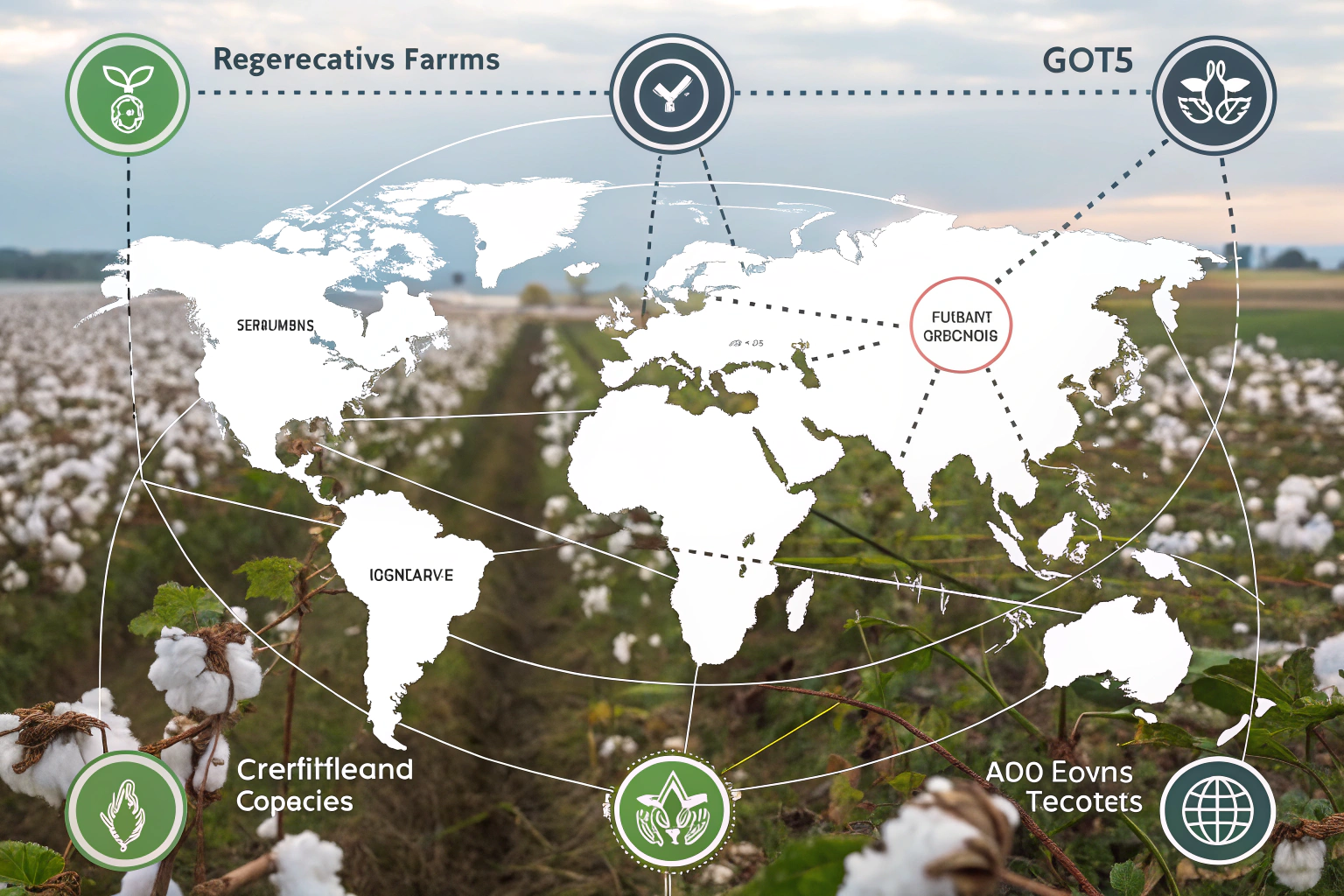As global demand for sustainable textiles surges, regenerative cotton has emerged as a promising solution—not just for reducing environmental harm but actively reversing it. Unlike conventional organic cotton, regenerative cotton involves farming practices that restore soil health, boost biodiversity, and sequester carbon. But with increased buzz comes increased risk of greenwashing.
For responsible brands and textile buyers, verifying regenerative cotton claims is no longer optional—it's essential. Without transparent documentation and third-party certification, the value of regenerative practices can be diluted, or worse, faked.
This article will guide you through how to validate regenerative cotton claims at every stage of the supply chain—from soil to store—and how to work with trusted fabric manufacturers like Fumao Fabric that uphold these principles.
What Makes Cotton Regenerative vs Organic or Conventional?
While organic cotton eliminates synthetic chemicals, regenerative cotton goes further by implementing farming systems that restore ecosystem health. It’s not just about doing less harm—regenerative practices aim to leave the land better than it was before.
This includes techniques like no-till farming, crop rotation, composting, agroforestry, and integrating livestock—all contributing to increased carbon capture and soil fertility.
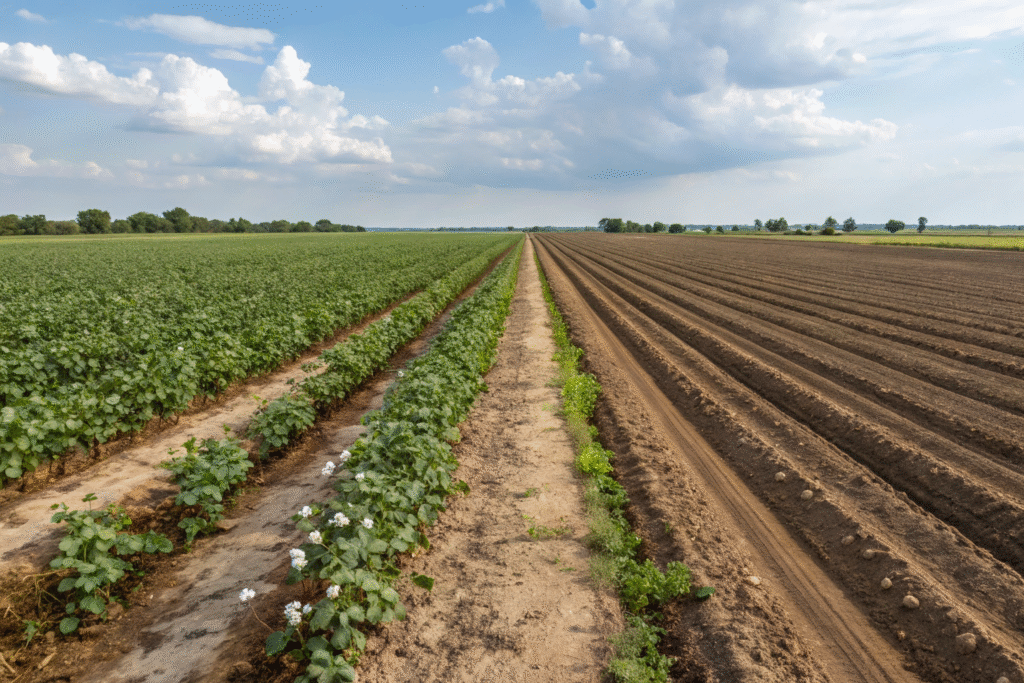
How Is Regenerative Cotton Different From Organic Cotton?
| Feature | Organic Cotton | Regenerative Cotton |
|---|---|---|
| No synthetic pesticides | ✅ | ✅ |
| GMO-free | ✅ | ✅ |
| Soil health improvement | Partial (avoidance) | Active restoration (carbon + microbes) |
| Requires third-party cert | ✅ | ✅ (Regenagri™, ROA, etc.) |
| Biodiversity benefits | Moderate | High |
Explore Textile Exchange’s definition or read about Soil Carbon Sequestration.
Is Regenerative Always Certified?
No. Some farms follow regenerative practices informally, but without third-party certification, these claims lack verification. Reputable buyers demand certifications like Regenagri™, Regenerative Organic Certified (ROC), or support from Textile Exchange programs.
Which Certifications Confirm Regenerative Cotton Practices?
A regenerative claim is only as strong as the paper trail behind it. The best way to verify that cotton was grown regeneratively is through recognized certifications tied to field audits, soil health metrics, and product traceability.
At Fumao, we work only with cotton mills that offer certified input documentation, including field-level reports and transaction certificates aligned with regenerative standards.
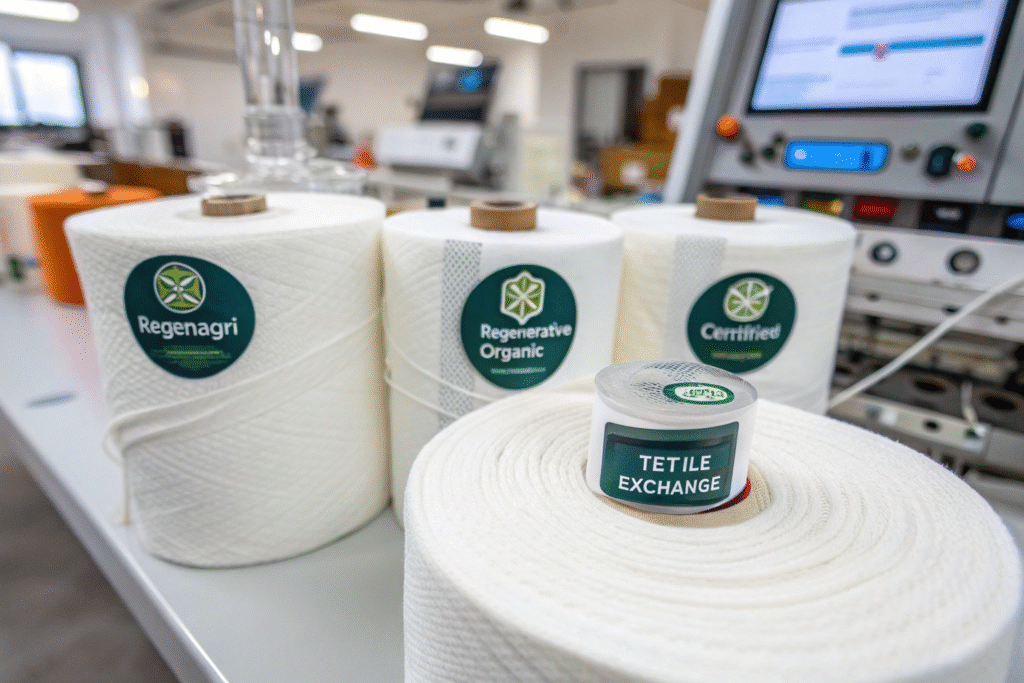
What Are the Top Regenerative Cotton Certifications?
- Regenagri™ – Focuses on soil health, biodiversity, water cycles
- Regenerative Organic Certified (ROC) – Includes social fairness, animal welfare, and high-bar organic
- Textile Exchange Regen Ag Programs – Emerging standardization tied to the Climate+ strategy
- GOTS + Addendum – For organic processing with regenerative traceability layers
View ROC certified farms list or find Regenagri suppliers.
How Do Transaction Certificates Work in Traceability?
Transaction Certificates (TCs) are issued for every shipment of certified cotton and include details like supplier name, lot size, batch number, and certification body. If your supplier can’t provide a TC linked to regenerative cotton, the claim is unverified.
Learn more from Control Union’s TC FAQ or check Textile Exchange’s chain of custody policy.
What Digital Tools Help Track Cotton Certification Across the Supply Chain?
Manual paperwork is slow, prone to fraud, and hard to scale. Thankfully, digital solutions now offer blockchain-based platforms and QR-scannable IDs that track cotton from seed to shelf. These tools make verification transparent and real-time.
Fumao supports digital compliance through integration with platforms like TrusTrace, TextileGenesis™, and Bext360—allowing our clients to trace every bale of regenerative cotton they buy.
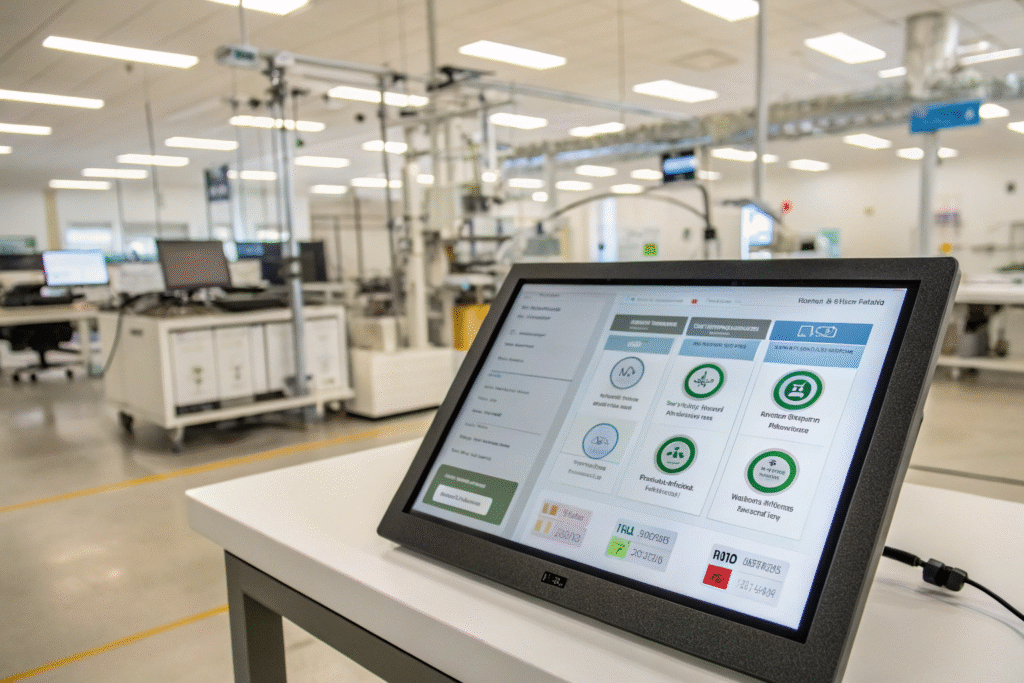
What Platforms Are Most Widely Used?
- TextileGenesis™ – Backed by Lenzing and Textile Exchange for fiber-to-retail tracking
- TrusTrace – Used by brands like Fjällräven and Decathlon for ESG mapping
- Bext360 – Offers farm-level carbon capture monitoring and digital chain of custody
- BCI Enhanced Traceability – For partially regenerative practices via Responsible Cotton models
Explore TextileGenesis traceability case studies or see TrusTrace platform demo.
How Can Brands Use Blockchain to Prevent Greenwashing?
Blockchain technology prevents data tampering and makes it easier to authenticate certification claims. A unique fabric roll ID is created at ginning, and each production stage logs an unchangeable record—offering complete chain-of-custody visibility.
Discover blockchain impact on textiles or read WWF’s digital supply chain work.
How to Vet Fabric Suppliers for Regenerative Cotton Transparency?
Sourcing certified regenerative cotton isn’t just about the fiber—it’s about trusting your supplier to follow through with documentation, logistics, and post-sales support.
Fumao Fabric offers vertically integrated production: from GOTS-certified dyeing to Regenagri™-verified cotton sources—all backed by testing reports, batch IDs, and customs-friendly logistics.
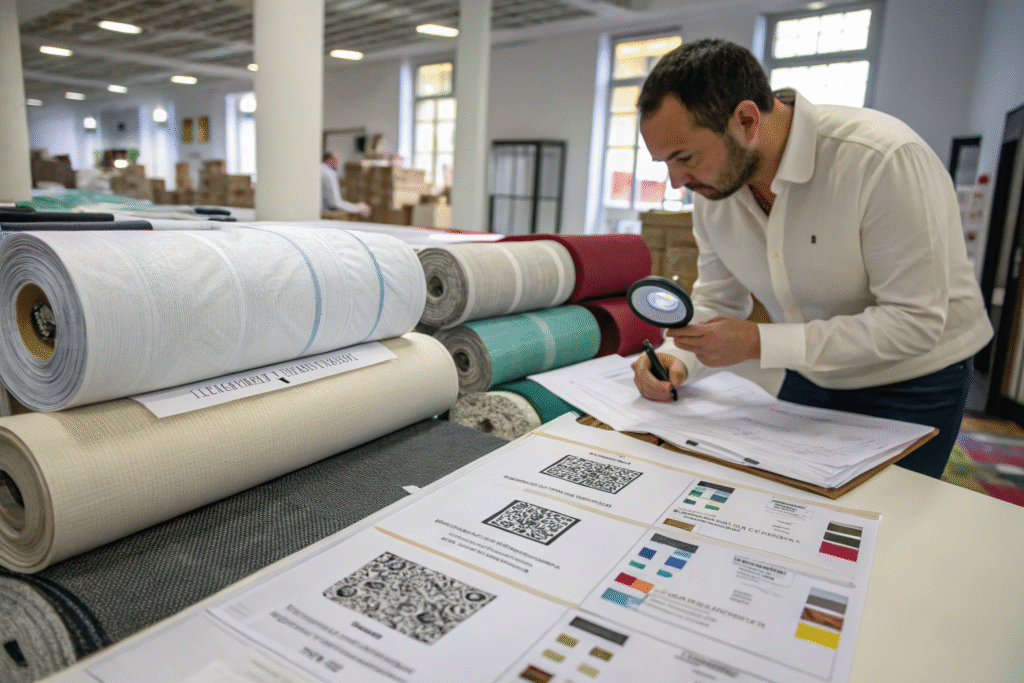
What Should You Ask a Supplier Before Placing Orders?
- Can you provide Regenagri™ or ROC certificates with TC numbers?
- Do you offer roll-level QR traceability or RFID tracking?
- What mill and ginner partnerships do you maintain?
- How is your dyeing process aligned with GOTS or bluesign®?
- Can I view your CNAS or third-party lab reports?
Review Textile Exchange Supplier Verification Guide or see Regenagri Implementation Tools.
What Makes Fumao a Trusted Regenerative Cotton Supplier?
- Exclusive cooperation with certified regenerative cotton mills
- In-house testing: shrinkage, chemical residue, fiber blend ratios
- Support for B2B buyers: MOQ 300m with custom finishes
- Delivery in FOB, CIF, or DDP terms with carbon footprint declaration per shipment
- Integration with TextileGenesis™ for digital tracking
Learn more about Fumao’s quality control system or view our sustainable fabric categories.
Conclusion
Regenerative cotton is not just a buzzword—it’s a revolution in how we grow, verify, and trust our fibers. As consumers become more conscious, brands must go beyond organic and show clear, verifiable proof that their cotton restores the planet.
At Fumao Fabric, we empower our global clients with certified, trackable regenerative cotton—from verified farms to finished fabric rolls. Whether you're building a climate-conscious brand or fulfilling a sustainability mandate, we offer transparency, quality, and logistical strength all in one.
To start your regenerative cotton sourcing journey, contact our Business Director Elaine at elaine@fumaoclothing.com. Let’s turn certification into action—one fiber at a time.

